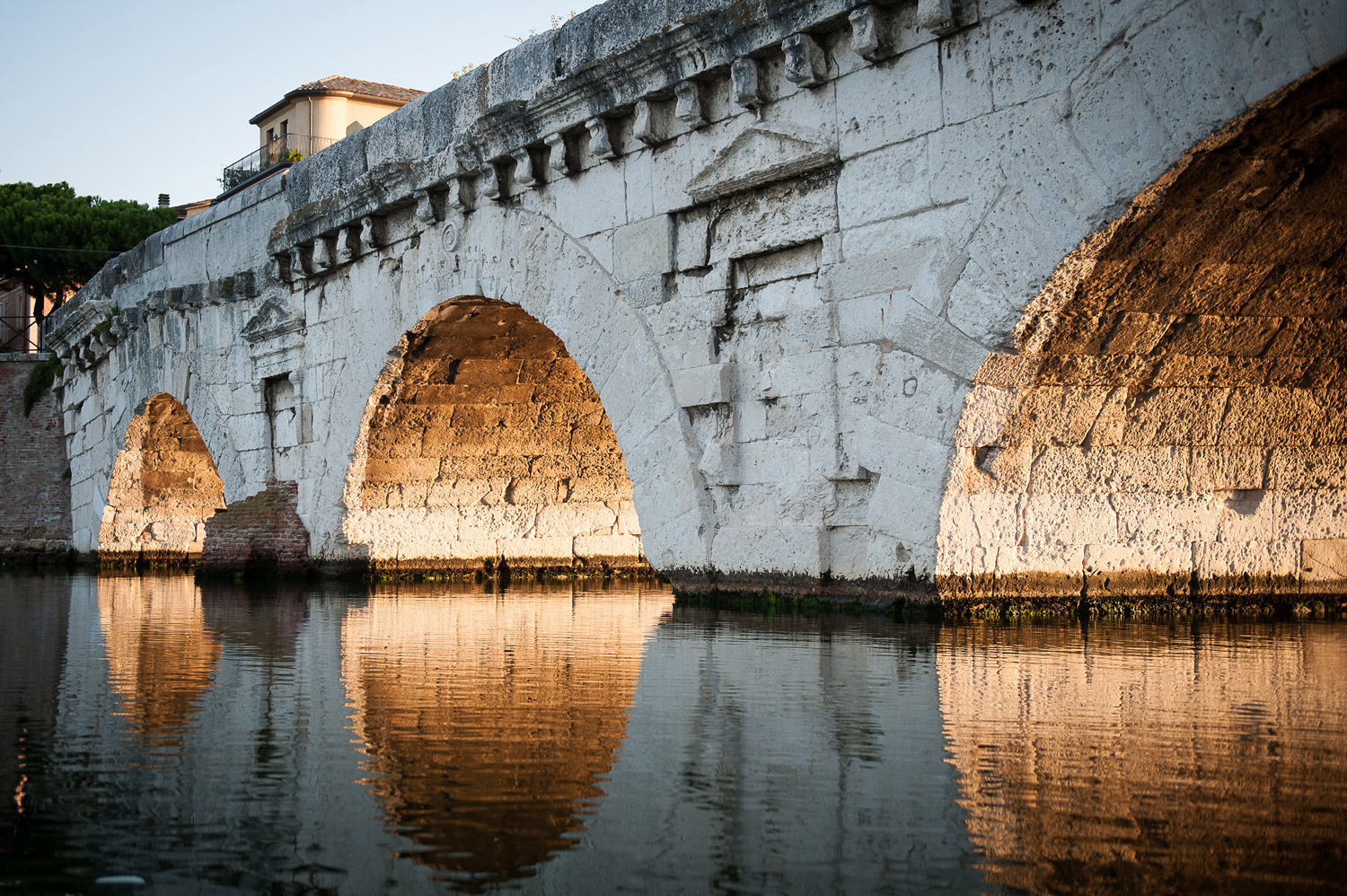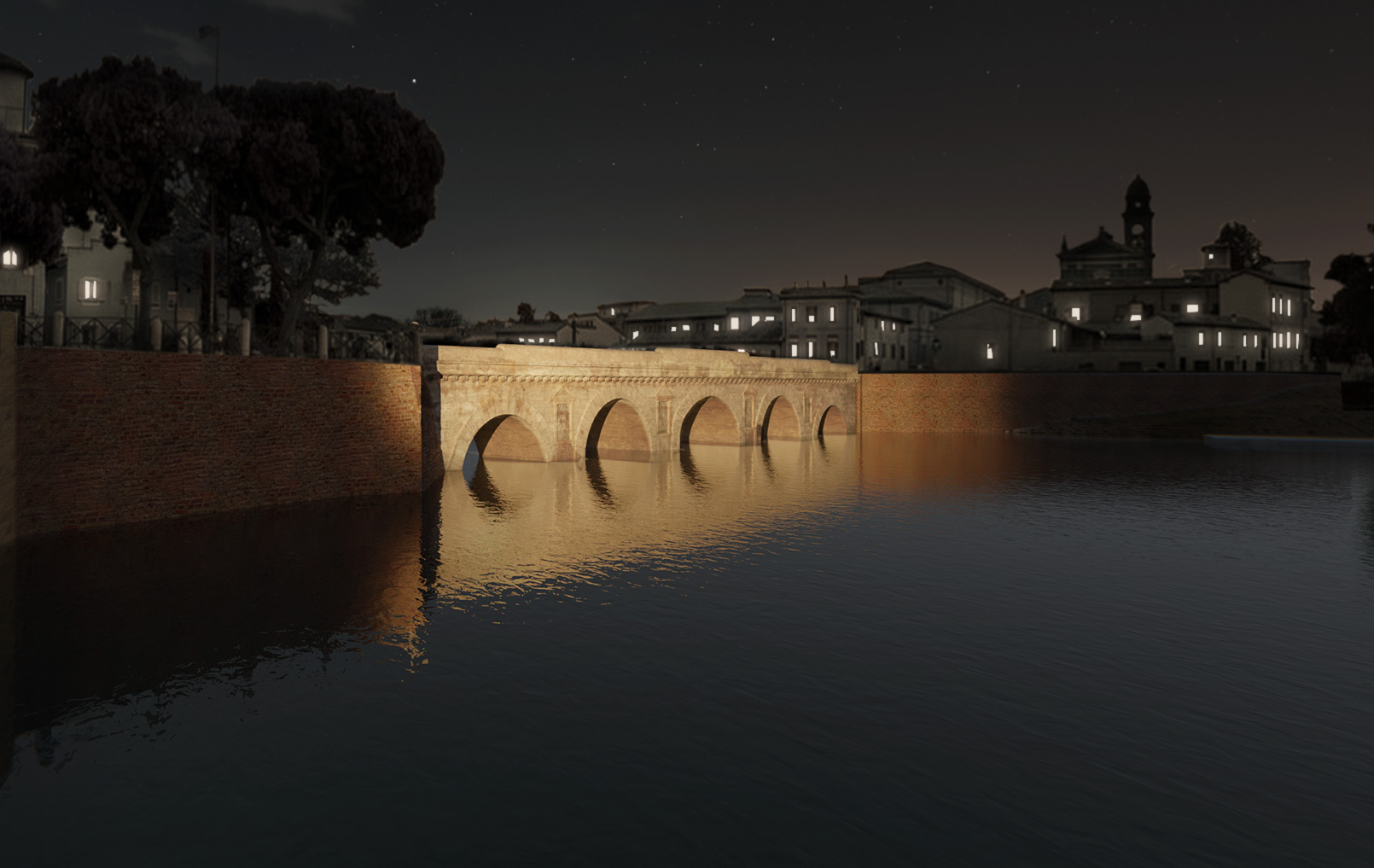During the 3rd century BC, the Romans decided to found a colony at the mouth of the river Ariminus to use it as a junction between important communication routes as well as an access to the sea. The colony expanded rapidly, forming the city of Rimini. Traces of Roman activities have been preserved to this day. Today, the river is called Marecchia and is crossed by the bridge built by Emperor Augustus in 14 AD, and completed by Tiberius in 21 AD. The Tiberius Bridge, as it is called nowadays, is built in a Doric style and has five arches, at the pillars there are the same number of aedicules with tympanums. Proceeding from the sea, it is the last bridge that can be found on the Marecchia River, its eastern side overlooking the Square on the Water and the park behind it, giving it a privileged position to be contemplated by citizens.

Our project was the winner of a competition for the design a new lighting system (source: Ansa). It is part of a larger plan to redevelop the historic city centre, which will also include some restoration works. As it often happens in the projects we develop, our intention is to integrate the night lighting with the natural light that the bridge gets during the day. For this reason, we studied the solar path of theplace: the bridge is oriented along the north-west – south-east axis, light and shadow alternate throughout the day between these two prospectives, one appearing in the light, the other in the shadow and at sunset. The artificial light will emulate the solar transition by reproducing the light temperature and the shadows that can be found during the day. The entire cycle will last one hour and thirty minutes, the transition will not be visible to the naked eye as it will occur slowly, it will be necessary to stop and admire the artefact for a while before discerning a change or, alternatively, to return to the same place at two different times during the night. Waiting is a key factor in this project, as it underlines the importance of this monument, which deserves to be contemplated rather than observed distractedly.

The solar cycle is simulated with three different light scenarios reproducing sunrise, midday and sunset; the succession from one to the other occurs progressively over forty-five minutes, making the transition imperceptible as it occurs. In the dawn scenario, the south-eastern front is illuminated with a warm light, as it receives direct sunlight in the morning; the opposite front, which is only indirectly illuminated during the day, receives light with a very cold gradient and low intensity, to reproduce the faint light of the early hours of the day. At noon, the two fronts receive the same lighting treatment, with a “neutral” white gradient (3000°K). At sunset, the west-facing side receives a very warm, almost golden light, while the opposite front receives a soft and cold one; the warm light coming from the west is reflected in the water, illuminating the intrados; this creates a very scenographic effect on the east front, where the cold white façade contrasts with the golden hue below the arches.

